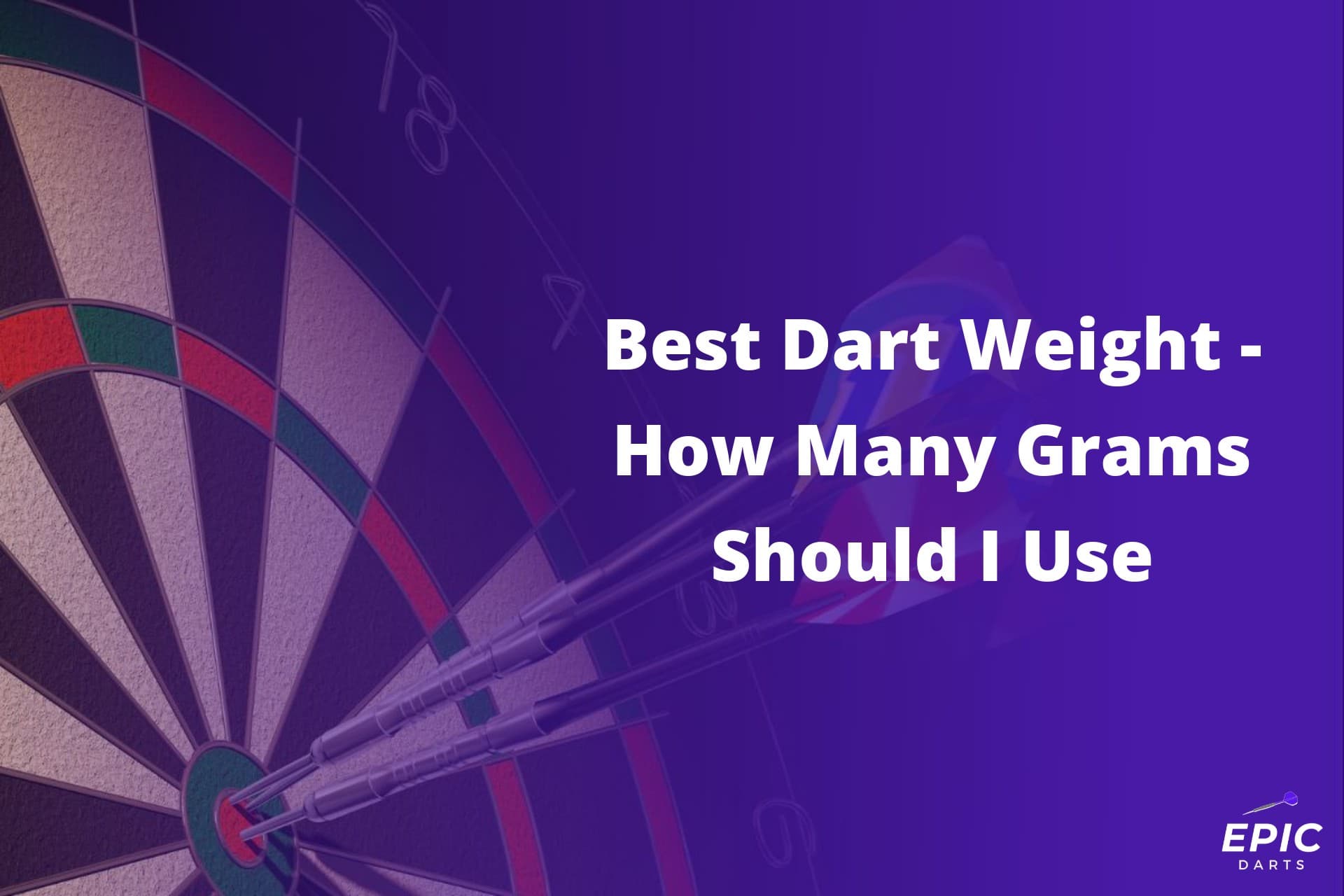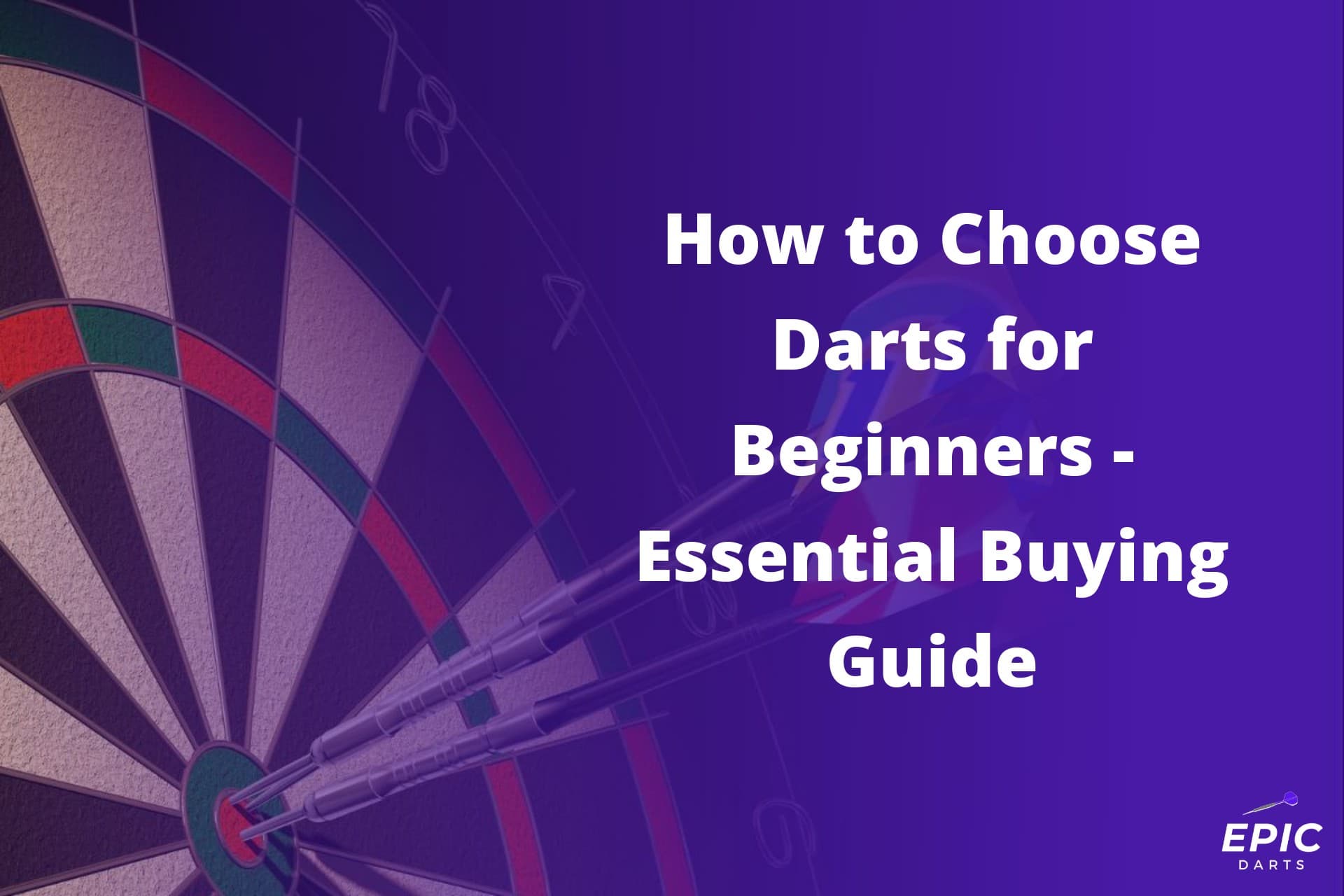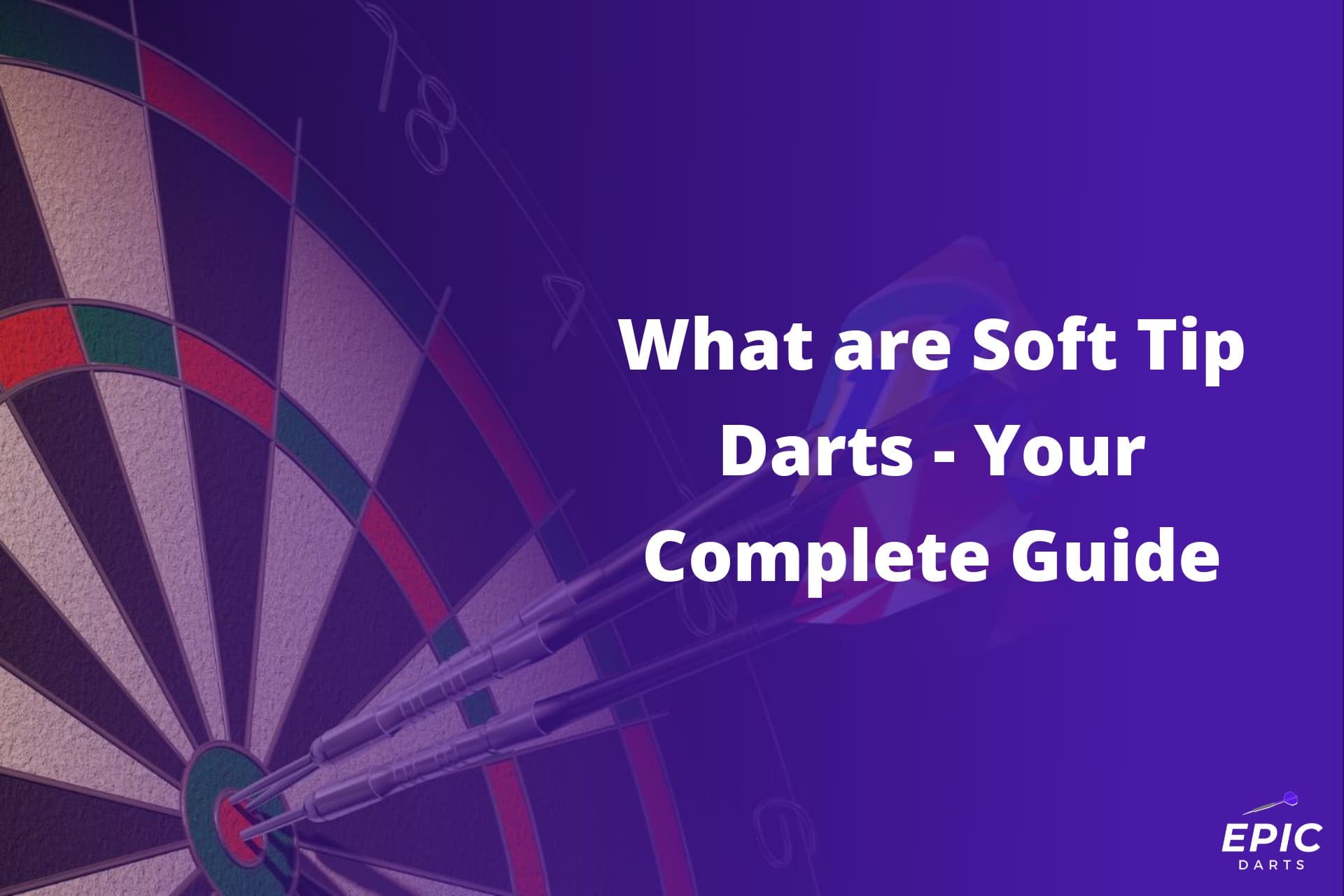As a dart player, beginner or veteran, you may have wondered about the best dart weight for optimum performance. Darts come in a wide range of weights, typically from 12 to 50 grams. The weight of the dart can significantly impact your throwing style and accuracy, so it’s essential to choose the right one. But what is the ideal dart weight? Is there a universal answer, or does it depend on individual preference and skill level?
There isn’t a universally perfect dart weight; it largely depends on personal comfort and throwing style. However, most players tend to prefer darts weighing around 20 to 26 grams. This weight range provides a good balance of control and stability, making it easier for players to maintain consistent throws. If you’re a beginner, it might be a good idea to start within this range and adjust as you become more experienced and develop your own unique style.
But choosing the right dart is about more than just the weight. There are other factors to consider, such as the material, shape, and design of the dart. Each element can affect your gameplay differently. Want to know more about picking the right darts? Read on as we talk about the various aspects of dart selection, from understanding different materials to choosing the right flights and shafts.
Factors to Consider When Choosing Dart Weight
There are several factors that you should take into account when choosing a board. Here are some tips from the pros: consider the weight in grams and the type of board. Let’s dive into these pros and cons to help you make an informed decision when choosing the right set of shafts. Here’s a tip: consider these considerations before making a purchase.
Impact of player strength and physical abilities on dart weight selection
One of the key tips for determining the ideal dart weight is to consider your own strength and physical abilities. It’s important to set the weight that works best for you. Different players have varying levels of strength, which can affect their ability to throw darts accurately. Here are some tips from the pros on how to improve your dart throwing accuracy. For instance, if you’re a stronger individual, a helpful tip is that you may find it easier to handle heavier darts. On the other hand, if you have less upper body strength, a helpful tip is to consider using lighter darts, as they might be more suitable for you.
Influence of grip and control on determining the appropriate dart weight
Your grip and control over the dart also play a significant role in selecting the right weight tip. The way you hold and release the dart can impact its trajectory and accuracy. Here’s a tip: be mindful of your grip and throw technique. If you prefer a firmer grip with more control, a slightly heavier dart tip may provide better stability during your throw. Conversely, if you favor a lighter touch or have a looser grip, opting for a lighter dart might be advantageous.
Considering different playing conditions and environments for optimal performance
The playing conditions and environments where you participate in dart games can vary significantly. It’s important to consider these factors when choosing your ideal dart weight. For example, outdoor settings with wind or other external elements may require heavier darts to maintain stability during flight. Indoor venues with controlled environments might allow for more flexibility in terms of dart weight selection.
Understanding how personal preferences play a role in choosing dart weight
Lastly, personal preference should not be overlooked when deciding on the best dart weight for yourself. Each player has unique preferences based on their style of play and comfort level with specific weights. Some individuals may simply feel more confident throwing certain weights over others due to personal preference or past experiences.
By taking into account the impact of player strength, grip and control, playing conditions, and personal preferences, you can narrow down your options and find the common dart weight that suits you best. Remember, experimenting with different weights is key to finding the perfect fit for your game.
Experimentation: Finding Your Ideal Dart Weight
Experimenting with different dart weights can be a game-changer. By finding the best dart weight for you, you’ll have better control and accuracy, leading to more successful throws. Here are some tips to help you in your quest for the perfect dart weight:
Starting with a Mid-Range or Average Dart Weight
When beginning your experimentation, it’s wise to start with a mid-range or average weight dart. This provides a good baseline for comparison as you explore different options. Look for darts that fall within the average weight range of 20-24 grams. These weights are commonly used by many players and can give you a sense of what feels comfortable in your hand.
Keeping Track of Performance and Adjustments
Throughout the experimentation process, it’s crucial to keep track of your performance and any adjustments made. Take note of how each dart weight feels during practice sessions or matches. Pay attention to factors such as consistency, aim, and overall comfort. By documenting these observations, you can identify patterns and make informed decisions about which weights suit you best.
Seeking Advice from Experienced Players or Professionals
Don’t hesitate to seek advice from experienced players or professionals during your experimentation journey. They can provide valuable insights based on their own experiences and expertise. Engage with them at local dart clubs, online forums, or even through social media groups dedicated to darts. Their guidance may offer new perspectives and help steer you towards finding your ideal dart weight.
Remember, finding the best dart weight is all about personal preference—what feels right for one player may not work for another. So take the time to experiment with different weights, pay attention to how they look and feel in your hand, and trust yourself throughout the process. Happy throwing!
Advantages of Lighter Darts vs. Heavier Darts
Lighter darts have their own set of advantages over heavier ones. Let’s dive into some key points to consider when deciding between the two:
- Increased Speed and Agility: Lighter darts offer a way to enhance your game with their fast flights. These nimble projectiles allow for quicker throws, enabling you to react swiftly and seize scoring opportunities.
- Reduced Fatigue during Long Playing Sessions: When engaging in extended dart sessions, lighter darts can be a pro choice. Their lower weight puts less strain on your arm, minimizing fatigue and allowing you to maintain accuracy throughout the game.
- Drawbacks of Reduced Stability: It’s important to note that lighter darts may come with some trade-offs. One potential drawback is reduced stability. The plastic flights used in lighter darts are more susceptible to being affected by air currents or slight movements, making them slightly less steady in flight.
- Advantageous Situations for Heavier Darts: Despite the benefits of lighter darts, there are instances where heavy darts can provide an advantage. For example, if you have a strong throwing technique or prefer a more forceful throw style, heavier darts can give you better control and stability.
Popular Dart Weights for Different Skill Levels
Choosing the right dart weight is crucial for players of all skill levels. The weight of your dart can greatly impact your accuracy and overall performance on the dartboard. Let’s take a look at the recommended dart weights for beginners, intermediate, and advanced players.
Recommended Dart Weights:
- Beginners: For those new to darts, it’s best to start with lighter darts. A weight range between 18-20 grams is ideal as it allows beginners to develop proper throwing techniques without straining their arms.
- Intermediate Players: As you progress in your skills, you may want to consider increasing the weight of your darts slightly. Darts weighing between 21-23 grams are commonly preferred by intermediate players who have developed a consistent throwing style.
- Advanced Players: Experienced players often opt for heavier darts as they provide greater stability and control during throws. Dart weights ranging from 24-26 grams are frequently used by professionals due to their ability to withstand higher speeds and maintain accuracy.
Understanding how skill level impacts the ability to handle different weights is essential. While beginners may find heavier darts challenging to control, experienced players’ hands are accustomed to handling them effortlessly.
It’s important to address common misconceptions about ideal dart weights based on skill level. Contrary to popular belief, there is no one-size-fits-all approach. Each player has unique preferences and playing styles that influence their choice.
Professional dart players serve as excellent examples when considering popular choices among players at various levels. Many professionals prefer steel tip darts due to their durability and precision. However, soft tip darts are also popular in electronic dartboards tournaments because they reduce bounce-outs.
Throw Styles and their Impact on Dart Weight Selection
Throw styles play a crucial role in determining the ideal dart weight for each player. Whether you have a smooth, aggressive, or finesse throw style, it’s important to consider how your technique influences the weight of your darts. Here are some key factors to keep in mind when selecting the best dart weight based on your throw style:
- Smooth Throw Style: If you have a smooth throw style, you’ll want to opt for a slightly heavier dart weight. The additional weight helps maintain stability during your throw and improves accuracy. Consider trying dart brands known for their precision and balance.
- Aggressive Throw Style: For those with an aggressive throw style, lighter dart weights are often preferred. The reduced weight allows for faster release and increased velocity, which can be advantageous when aiming for tight groupings or high scores. Look for dart brands that offer lightweight options without compromising on durability.
- Finesse Throw Style: A finesse throw style requires a delicate touch and precise control. In this case, finding the right balance is essential. Medium-weight darts tend to work well for finesse players as they provide enough stability while allowing for subtle adjustments during flight. Explore different dart brands that offer versatile options suitable for finesse throws.
When considering different throw styles and their impact on dart weight selection, it’s helpful to look at successful players who exhibit varying techniques:
- Smooth Throw Style: John Smith prefers 24g darts from Brand X due to their exceptional balance.
- Aggressive Throw Style: Sarah Johnson opts for 18g darts from Brand Y as they allow her to generate maximum power.
- Finesse Throw Style: Michael Thompson finds 22g darts from Brand Z perfect for his precise control over each shot.
By understanding your own throw style and experimenting with various weights from reputable dart brands, you can find the best dart weight that suits your unique playing style. Remember, it’s all about finding the perfect balance between comfort, control, and accuracy.
Selecting the Best Dart Weight for Bulls-Eye Accuracy
Now that you have a better understanding of how to choose the best dart weight, it’s time to put your knowledge into practice. Remember, finding the ideal weight is a personal journey that requires experimentation and practice. Start by considering factors such as your throwing style, skill level, and preferences. Then, try out different weights to see which one feels most comfortable and allows you to achieve greater accuracy. Whether you prefer lighter darts for their agility or heavier ones for their stability, the key is to find what works best for you.
To take your dart game to the next level, keep practicing with your chosen dart weight and continue refining your technique. Consider joining local leagues or participating in tournaments to challenge yourself and gain valuable experience. Don’t forget to have fun along the way! With dedication and perseverance, you’ll be hitting those bullseyes in no time.
FAQs
Can I use any dart weight if I’m a beginner?
As a beginner, it’s recommended to start with a mid-range dart weight between 20-24 grams. This range provides a good balance between control and power, allowing you to develop your throwing technique without feeling too heavy or too light.
Are there specific dart weights for different throw styles?
Yes, certain throw styles may benefit from specific dart weights. For example, if you have a smooth and gentle throw, lighter darts may suit you better as they require less force. On the other hand, if you have a more aggressive throw with a lot of power behind it, heavier darts can provide better stability during flight.
Can changing my dart weight improve my accuracy?
Changing your dart weight can indeed impact your accuracy. It’s worth experimenting with different weights until you find one that feels comfortable and allows you to consistently hit your target. However, keep in mind that accuracy also depends on other factors such as grip, stance, and practice.
How often should I re-evaluate my dart weight choice?
It’s a good idea to periodically re-evaluate your dart weight choice, especially if you feel like your accuracy or comfort level has changed. As you progress in your dart-playing journey and refine your technique, you may find that a different weight suits you better.
Can I use weighted darts for training purposes?
Yes, using weighted darts during practice sessions can be beneficial for building strength and improving consistency in your throw. Weighted darts help develop muscle memory and control, making it easier to transition back to regular darts when playing competitively.





